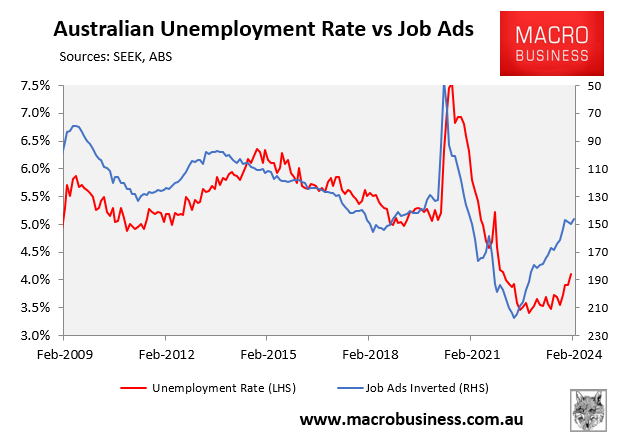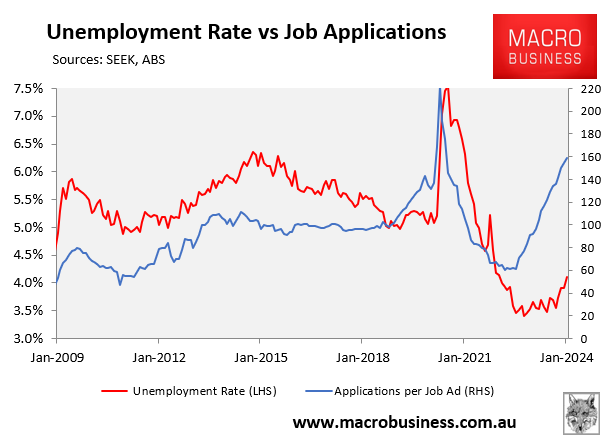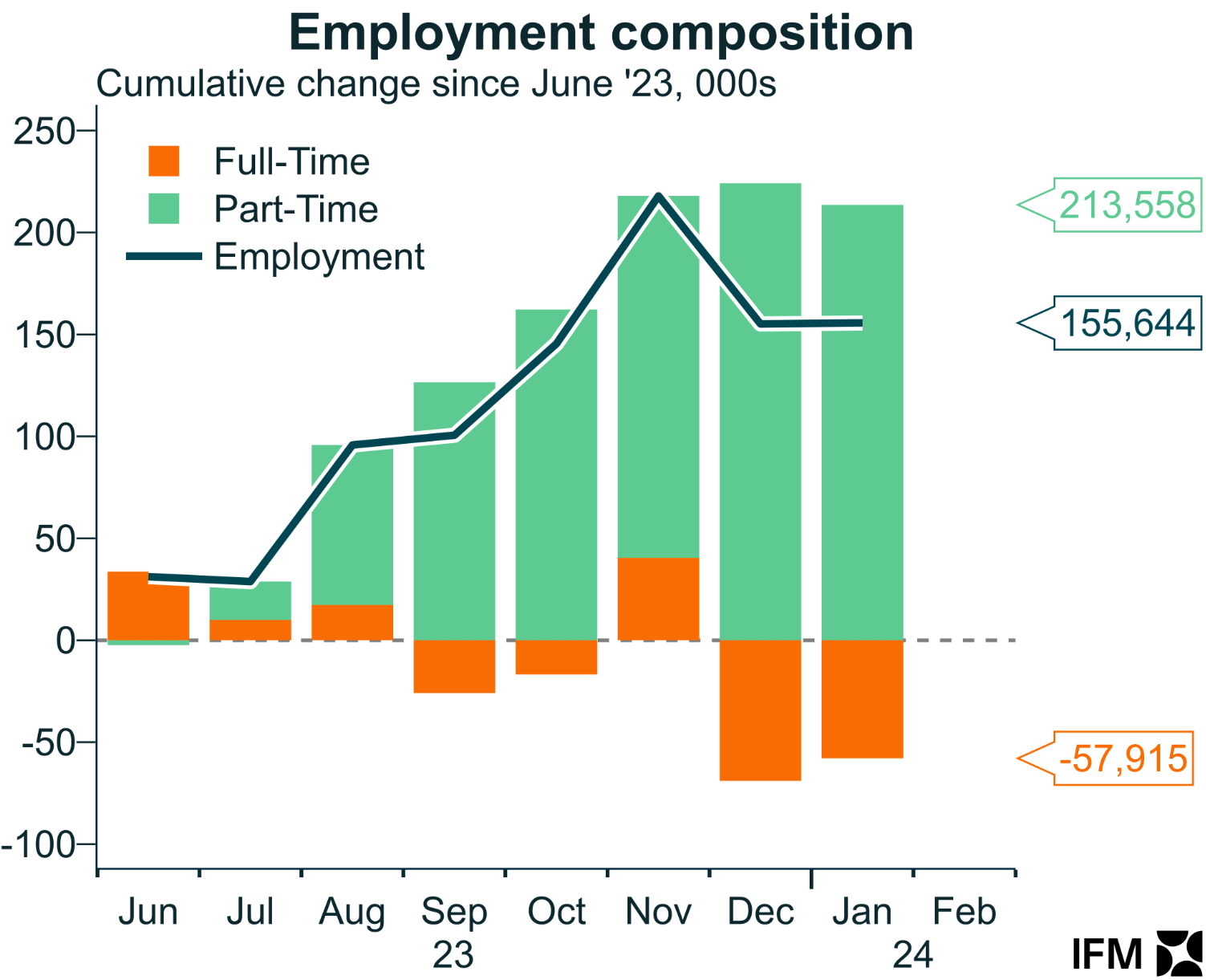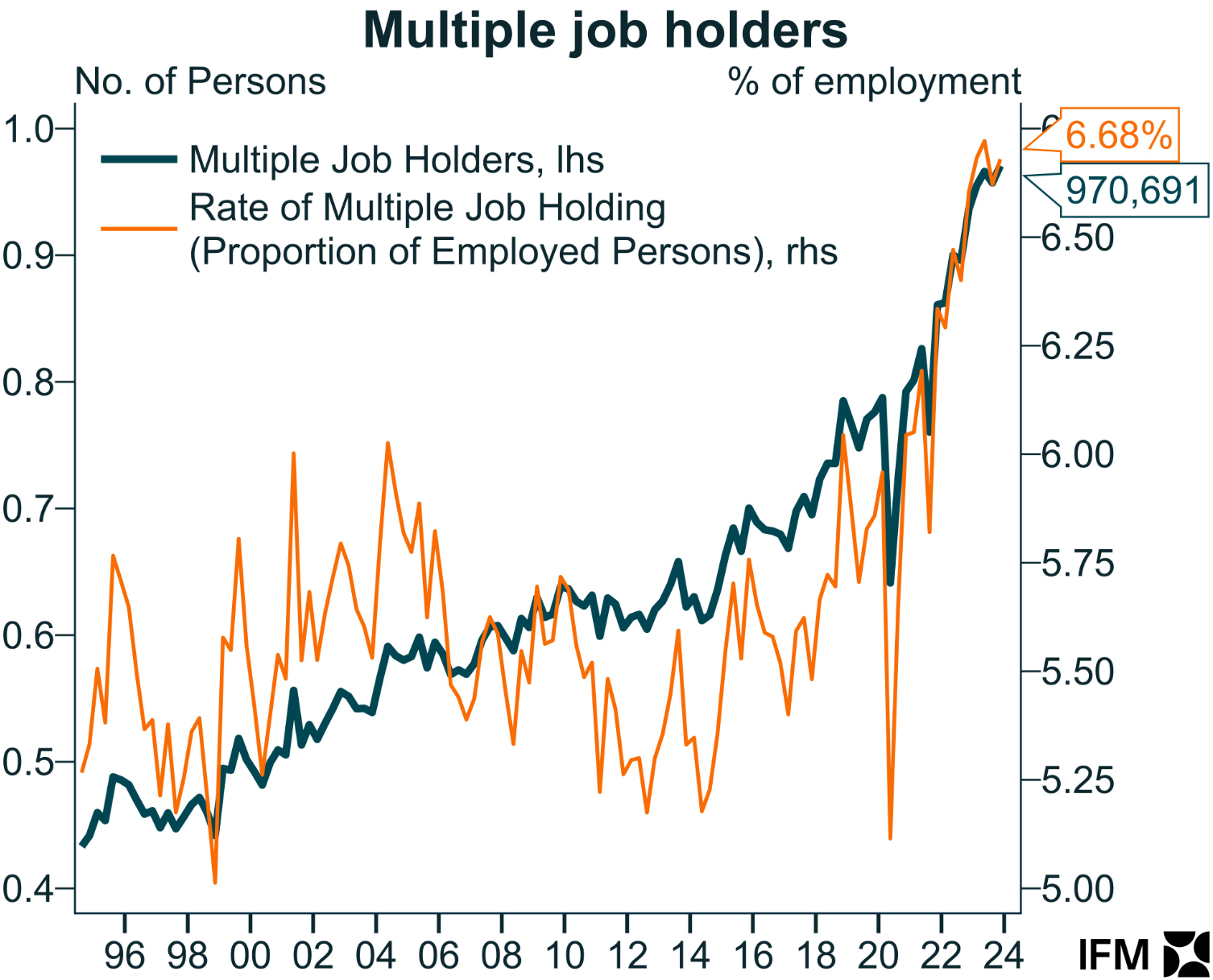Last week, Seek released data showing that the number of job applications had rebounded to pre-pandemic levels, which based on historical correlations, points to higher unemployment:

Seek also released data on the number of applications per job advertisement, which was even more worrying.
It showed that the number of applicants per job ad has rocketed well above pre-pandemic levels, which points to even higher unemployment:

The sharp increase in applicants per job ad reflects two factors: 1) labour demand from employers has weakened, reflected in falling job ads; and 2) labour supply is rising at a near record pace amid historically high net overseas migration.
Indeed, CBA estimates that nearly 35,000 jobs are required to be created every month just to soak up the additional workers (assuming a constant participation rate).

However, only 10,200 jobs were created in the three months to January.
Even worse, part-time employment (+213,558) has been the main driver of job growth since mid-2023, whereas full-time employment has actually decreased by 57,915:

Source: Alex Joiner
In turn, the number of hours worked across the Australian economy has collapsed since mid-2023:

Source: Alex Joiner
On Friday, the Australian Bureau of Statistics (ABS) released data showing that the number of Australians working multiple jobs hit a fresh high at the end of 2023:

Source: Alex Joiner
“With cost of living pressures it seems this will continue especially as hours within jobs has fallen materially”, Alex Joiner, chief economist at IFM Investors, noted on Twitter (X).
With jobs becoming more scarce at the same time as the volume of workers continues to grow at a furious pace, jobseekers in Australia are facing the Hunger Games.
The upside is that the Reserve Bank of Australia will be forced to cut interest rates earlier than expected as the nation’s unemployment rate rises.

